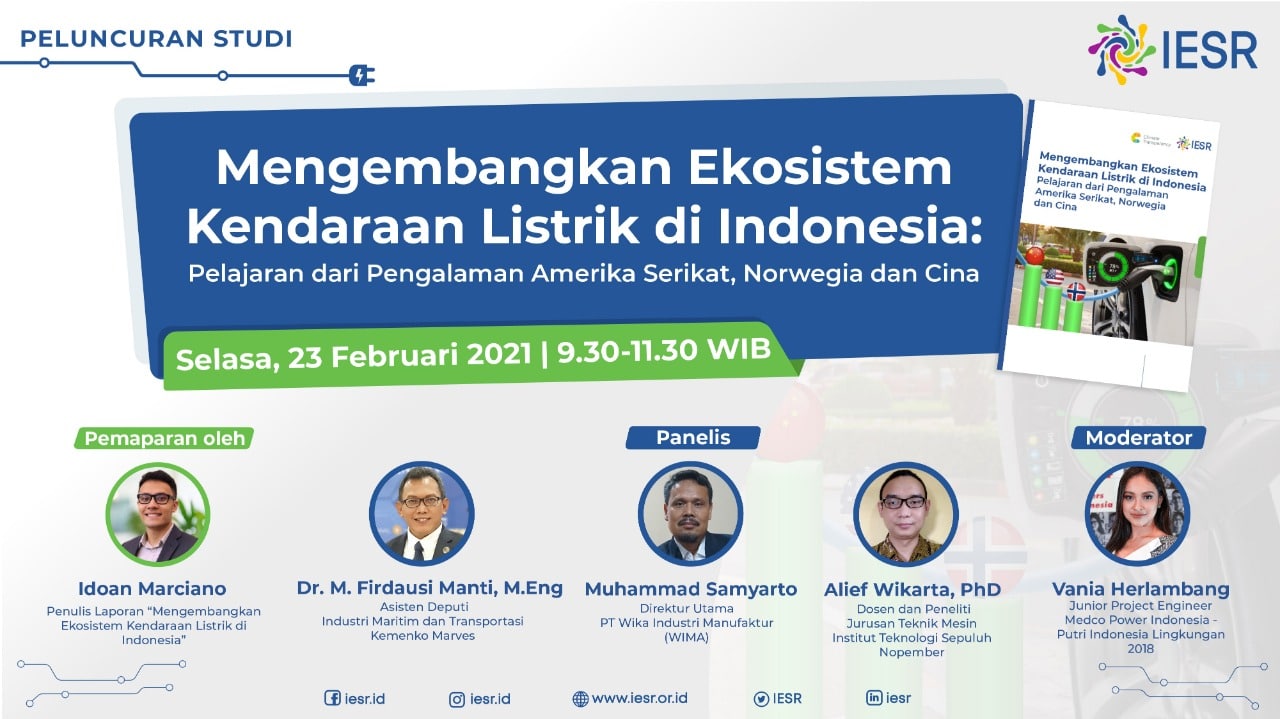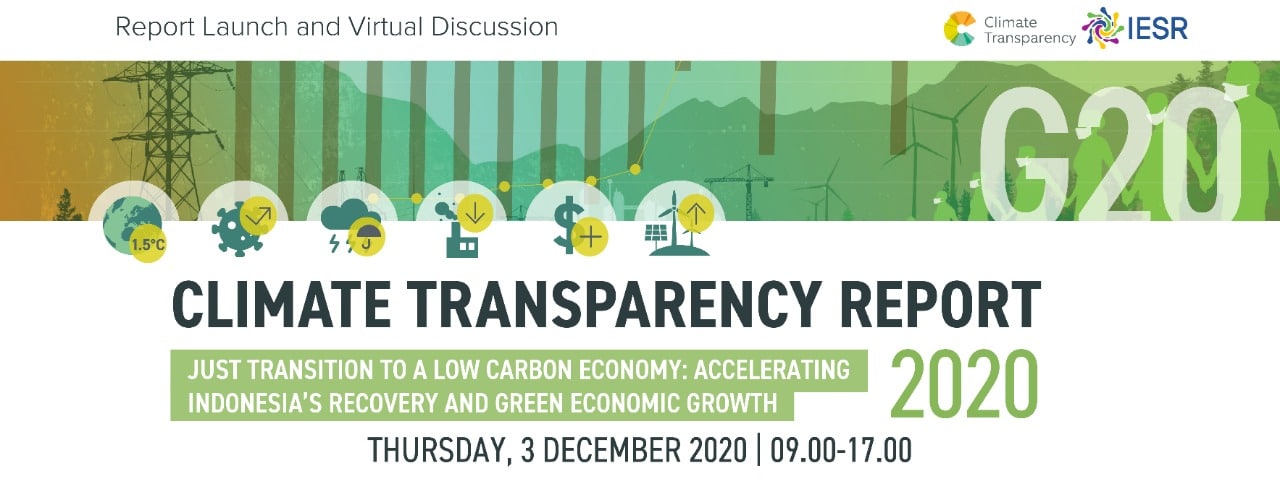
The Government of Jambi signed an MoU with IESR to accelerate energy transition
Committed to Achieves Regional Renewable Energy Mix Target 2025 and Boosts Energy Transition, Jambi Government Signed MoU with IESR Jambi has a regional renewab... Read more.

IESR: Indonesia Can Achieve Carbon Neutrality Before 2060
Press Release For Immediate Release Jakarta, 25 March 2021 – In an effort to fulfil the mandate of the Paris Agreement, the Government Indonesia through t... Read more.

Electricity surplus in Indonesia, can it be exported?
Export of PLTU electricity will not be effective The government through the Ministry of Energy and Mineral Resources is reviewing the possibility to export elec... Read more.

Strengthening the Development of Electric Vehicle Ecosystem in Indonesia, IESR Compare with the United States, Norway, and China
Jakarta, 23 February 2021 Aligned with the Paris Agreement, Indonesia needs to prioritize reducing greenhouse gas (GHG) emissions in the transportation sector... Read more.

12 IESR Recommendations for Accelerating of Electric Vehicle Ecosystem Development in Indonesia
Tuesday, 23 February 2021-Indonesia needs to work harder to prevent the increase in the earth’s temperature below 2℃ by reducing the addition of greenho... Read more.

Supported by IESR, Central Java Provides Attractive Opportunities For The Community To Install Rooftop Solar PV
Semarang 16 Februari 2021 – The Central Java provincial government, through the MEMR (Ministry of Energy and Mineral Resources) Office, in collaboration with ... Read more.

Boosting Solar Energy Acceleration in 2021, Government of Central Java holds a Central Java Solar Day
The 23% target of the renewable energy mix in 2025 in the National Energy General Plan (RUEN) until the end of 2020 has only reached around 11.5%. For the next&... Read more.

Opening remarks IETD 2020 by Fabby Tumiwa
Delivered by Fabby Tumiwa, Executive Director of IESR on the opening of The 3rd Indonesia Energy Transition Dialogue 2020 Download the full speech... Read more.

Accelerate Economic Growth with Green Recovery, COVID-19 Aftermath
Jakarta, 3 December 2020 – “All countries, globally, including the G20 countries, are facing a health emergency and economic crisis due to the Covid-19 ... Read more.

Kompas | Anticipating the Effects of the Energy Transition on the International Trade Sector
Aris Prasetyo | Kompas.id JAKARTA, KOMPAS – The world is moving away from fossil energy towards clean and sustainable energy sources. Indonesia must be re... Read more.
